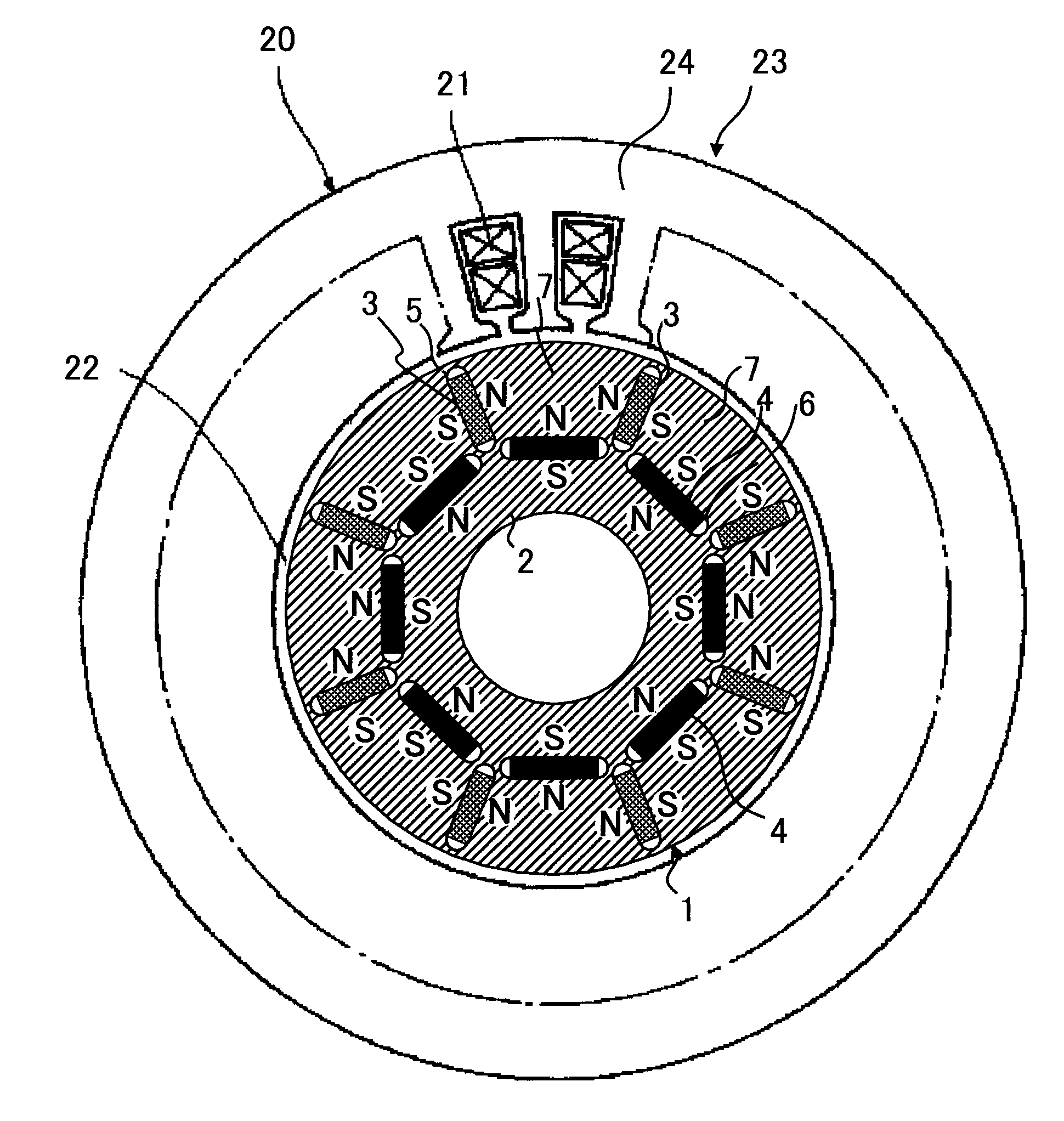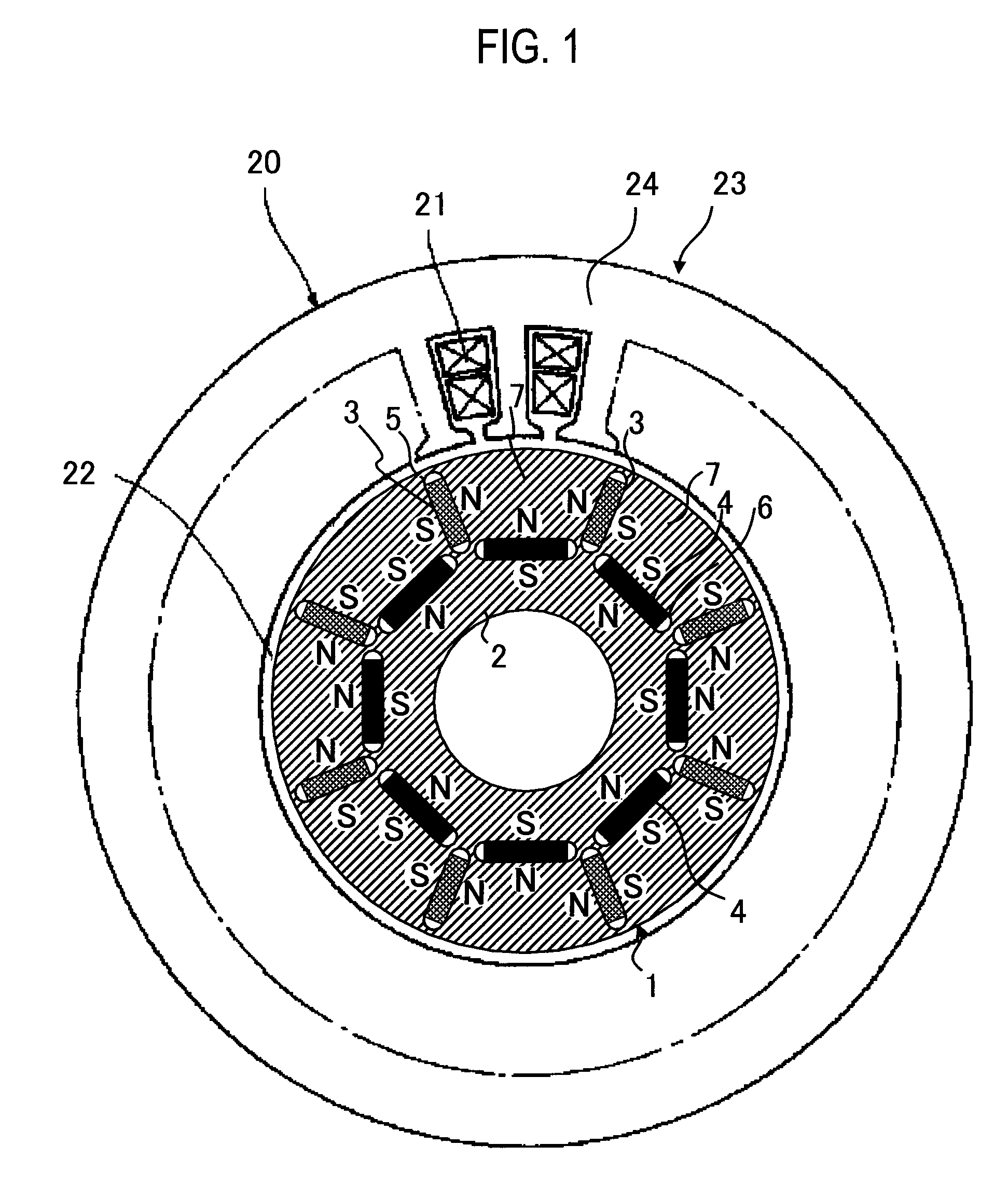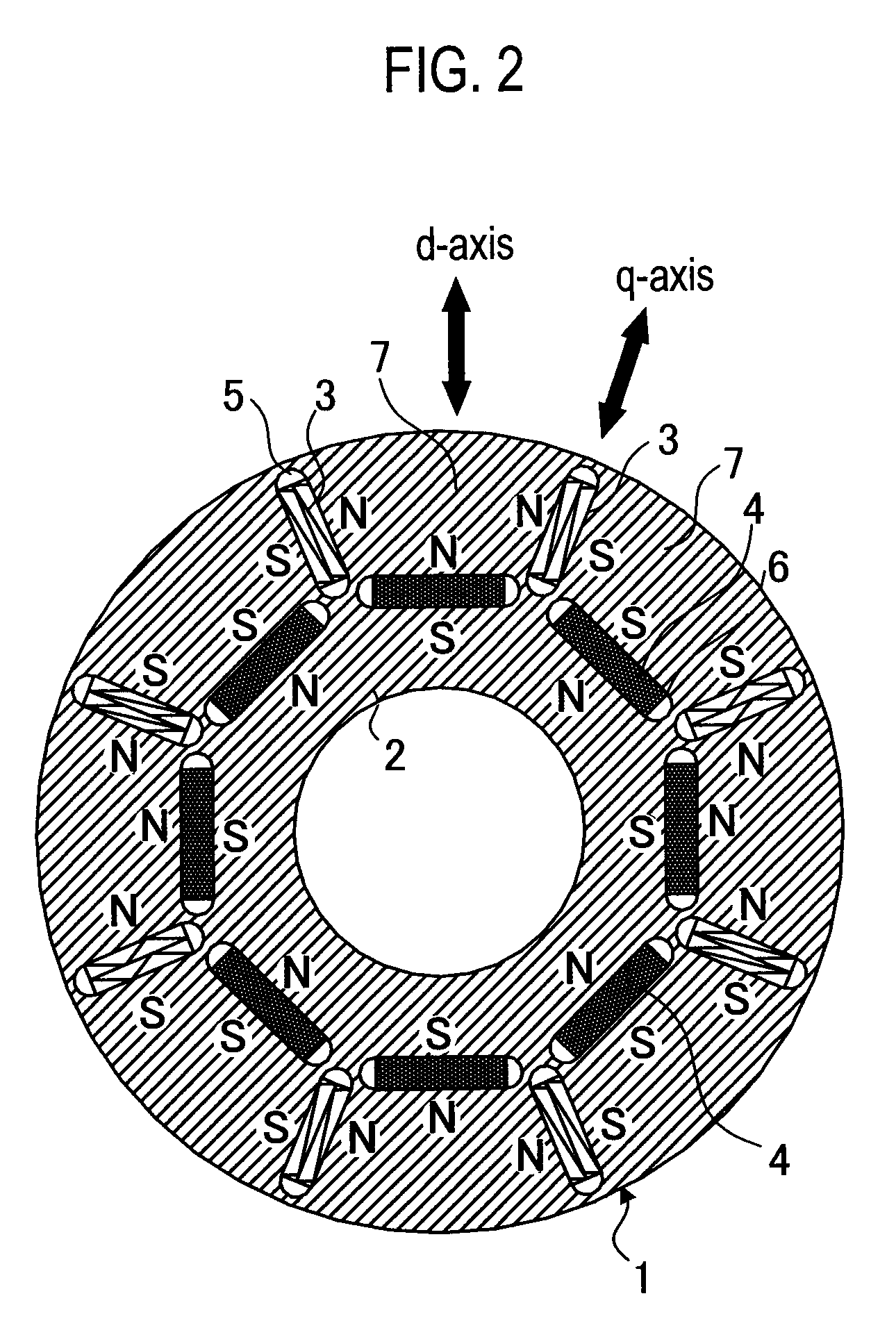Permanent-magnet-type rotating electrical machine
a permanent magnet and rotating electrical machine technology, applied in the direction of magnetic circuits, dynamo-electric machines, electrical apparatus, etc., can solve the problems of increasing the limit of the voltage reduction achieved, reducing the output and efficiency of the permanent magnet rotating electrical machine in a low-speed zone, and insulating breakage, so as to improve efficiency and reliability, high torque, and high output
- Summary
- Abstract
- Description
- Claims
- Application Information
AI Technical Summary
Benefits of technology
Problems solved by technology
Method used
Image
Examples
first embodiment
[0034]As illustrated in FIGS. 1 and 2, a permanent-magnet-type rotating electrical machine 20 according to the first embodiment of the present invention has a rotor 1. The rotor 1 has a rotor core 2 in which eight low-coercive-force permanent magnets 3 and eight high-coercive-force permanent magnets 4 are embedded at equal pitches. At a location of the rotor core 2 where the low-coercive-force permanent magnet 3 is embedded, a first hollow 5 is formed at each end of the permanent magnet 3. At a location of the rotor core 2 where the high-coercive-force permanent magnet 4 is embedded, a second hollow 6 is formed at each end of the permanent magnet 4. “7” indicates a magnetic pole portion of the rotor core 2. The rotor core 2 is constituted by laminating silicon steel plates. The low-coercive-force permanent magnet 3 is an alnico magnet or a FeCrCo magnet. The high-coercive-force magnet 4 is an NdFeB magnet.
[0035]As illustrated in FIG. 1, a stator 23 is constituted by winding a stator...
second embodiment
[0051]A rotating electrical machine 20 according to a second embodiment of the present invention is characterized in that, when a rotor 1 is at a highest rotation speed, a counter electromotive voltage generated by high-coercive-force permanent magnets 4 of the rotor is suppressed below a withstand voltage of electronic parts of an inverter serving as a power source of the rotating electrical machine.
[0052]A counter electromotive voltage caused by permanent magnets increases in proportion to rotation speed. If the counter electromotive voltage is applied to electronic parts of an inverter and if it exceeds a withstand voltage of the electronic parts, the electronic parts will cause insulation breakage. For this, a conventional permanent-magnet-type rotating electronic machine is designed to comply with the withstand voltage by reducing the flux amount of permanent magnets. This, however, deteriorates the output and efficiency of the motor in a low-speed zone.
[0053]According to the r...
third embodiment
[0055]A permanent-magnet-type rotating electrical machine 20 according to a third embodiment of the present invention is characterized in that, with permanent magnets providing a maximum flux amount to generate maximum torque, a flux amount of high-coercive-force permanent magnets 4 is smaller than a maximum flux amount of low-coercive-force permanent magnets 3.
[0056]When the rotating electrical machine provides the maximum torque, the flux amount of the low- and high-coercive-force permanent magnets 3 and 4 of a rotor 1 is maximized to reduce a necessary current and improve efficiency. At a maximum rotation speed, a d-axis current is passed to generate a magnetizing field to nearly zero the flux amount of each low-coercive-force permanent magnet 3, thereby nearly zeroing a counter electromotive voltage caused by the low-coercive-force permanent magnets 3. At the same time, each high-coercive-force permanent magnet 4 whose flux amount is not adjustable is designed to suppress its co...
PUM
 Login to View More
Login to View More Abstract
Description
Claims
Application Information
 Login to View More
Login to View More - R&D
- Intellectual Property
- Life Sciences
- Materials
- Tech Scout
- Unparalleled Data Quality
- Higher Quality Content
- 60% Fewer Hallucinations
Browse by: Latest US Patents, China's latest patents, Technical Efficacy Thesaurus, Application Domain, Technology Topic, Popular Technical Reports.
© 2025 PatSnap. All rights reserved.Legal|Privacy policy|Modern Slavery Act Transparency Statement|Sitemap|About US| Contact US: help@patsnap.com



